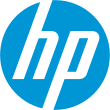
A mobile processor is a microprocessor designed for mobile devices such as laptops, and cell phones.
Samsung Notebook, formerly known as Samsung Sens, also marketed as Samsung Series (2011-2013), is a line of portable computers produced by Samsung Electronics. The Sens line was first launched in 1995 and lasted until 2013, exported overseas without the Sens branding, and replaced by Samsung Ativ. Ativ itself was also dropped in favor of Samsung Notebook. As of 2020, Samsung Notebook co-exists with the company's Galaxy Book line of laptops but is facing transition.

The Dell Latitude series is a line of laptop computers manufactured and sold by American company Dell. It is a business-oriented line, aimed at corporate enterprises, healthcare, government, and education markets; unlike the Inspiron series, which is aimed at individual customers, and the Vostro series, which is aimed at smaller businesses. The Latitude directly competes with the Lenovo ThinkPad and the EliteBook series by HP. Additionally, the "Rugged (Extreme)", "XFR" and "ATG" models compete primarily with Panasonic's Toughbook line of "rugged" laptops.
As of 2020, the x86 architecture is used in most high end compute-intensive computers, including cloud computing, servers, workstations, and many less powerful computers, including personal computer desktops and laptops. The ARM architecture is used in most other product categories, especially high-volume battery powered mobile devices such as smartphones and tablet computers.

Pentium is a discontinued series of x86 architecture-compatible microprocessors produced by Intel. The original Pentium was first released on March 22, 1993. The name "Pentium" is originally derived from the Greek word pente (πεντε), meaning "five", a reference to the prior numeric naming convention of Intel's 80x86 processors (8086–80486), with the Latin ending -ium since the processor would otherwise have been named 80586 using that convention.

Windows IoT, short for Windows Internet of Things and formerly known as Windows Embedded, is a family of operating systems from Microsoft designed for use in embedded systems. Microsoft has three different subfamilies of operating systems for embedded devices targeting a wide market, ranging from small-footprint, real-time devices to point of sale (POS) devices like kiosks. Windows Embedded operating systems are available to original equipment manufacturers (OEMs), who make it available to end users preloaded with their hardware, in addition to volume license customers in some cases.

Ultra-low-voltage processors are a class of microprocessor that are deliberately underclocked to consume less power, at the expense of performance.
Consumer Ultra-Low Voltage (CULV) is a computing platform developed by Intel. It was estimated in January 2009 that this market could reach 10 million CULV laptops shipped during that year. Competing platforms are the VIA Nano, AMD Yukon, AMD Nile notebook platform, and graphic chips from the Nvidia GeForce line within the "Nvidia Ion platform". Some of the lowest-power-consumption processors for the ultra thin CULV category are only a few watts more than the Intel Atom, which is rated at no more than 2.5 W. Because of their low power and heat output, CULV enables very thin computer systems, and long battery life in notebook computers, such as those designed to Intel's Ultrabook specifications.

HP EliteBook is a line of business-oriented high-end notebooks and mobile workstations made by Hewlett-Packard. The EliteBook series, which fits above the lower-end ProBook series, was introduced in August 2008 as a replacement of the HP Compaq high end line of notebooks. The EliteBook brand included mobile workstations until September 2013, when they were rebranded as HP ZBook. The EliteBook mainly competes against computer lineups such as Acer's TravelMate, Dell's Latitude and Precision, Lenovo's ThinkPad and Toshiba's Portégé and Tecra.
The HP Pavilion dv1000 series was a model series of "thin and light" widescreen laptops manufactured by Hewlett-Packard Company that features a 14.1" diagonal 16:10 display. Quanta Computer Inc. manufacturers the laptops alongside the dv2000, dv6000, and dv9000 series of laptops.

The ThinkPad E Series is a notebook computer series introduced in 2010 by Lenovo. It is marketed to small and medium-sized businesses.

The HP ProBook is a line of business-oriented laptop computers made by Hewlett-Packard. HP marketed the ProBook series to business users; the list price was lower than that of HP's higher-end EliteBook series.
The ThinkPad L-series laptops from Lenovo were designed with the theme of "green". The first laptops in the series were described by Lenovo as being the environmentally friendliest products in the ThinkPad range. Key features that contributed to the eco-friendly tag were the use of recycled material for packaging and post-consumer recycled content.
In addition to the ThinkPad and IdeaPad laptops, Lenovo also offers a value-priced series of laptops. Called ‘Essential’ on the Lenovo website, the products available in this line include the G Series, B Series, and V Series. Launched in 2009, the first laptop in the Essential range was the G530.

HP ZBook is a brand of mobile workstations made by HP Inc. Introduced in September 2013, it is a successor to HP's previous mobile workstations in the HP EliteBook series. The ZBook mainly competes against PCs such as Dell's Precision and Lenovo's ThinkPad P Series.

The Dell Inspiron series is a line of laptop computers made by American company Dell under the Dell Inspiron branding. The first Inspiron laptop model was introduced before 1999. Unlike the Dell Latitude line, which is aimed mostly at business/enterprise markets, Inspiron is a consumer-oriented line, often marketed towards individual customers as computers for everyday use.













